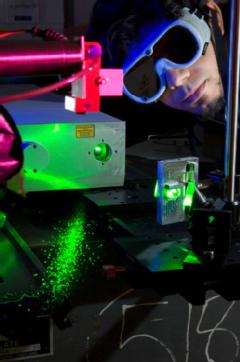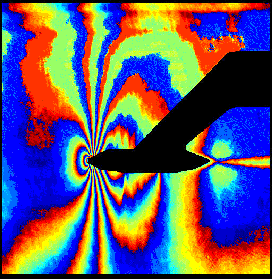Fuel combustion and optical diagnostics
Optimising combustion with optical diagnostic techniques The new Birmingham Science City cutting edge diagnostics capabilities will place the West Midlands region at the forefront of research into the optimization of combustion processes and system designs for existing and new fuels. The capability is focused on evaluating the combustion properties of different fuels, including biofuels, and optimising combustion processes for these fuels. The scope for applications is broad and includes:
The-state-of-the-art facilities include:
o Laser fluoresce and direct light emission. o A phase sensitive holographic camera which can create a remotely measured three dimensional temperature map in different thermal and combustion environments.
These optical diagnostic facilities and combustion research work at the University of Warwick complement the work of other Birmingham Science City facilities at the University of Birmingham in the fields of materials for high temperature diagnostic probes and burner construction and on the efficient combustion of alternative fuels in engines. This research facility is led by Professor Peter Bryanston-Cross, Head of the Optical Engineering Laboratory at the University of Warwick. His expertise is wide-ranging including:
Already working with companies such as QuinetiQ and Rolls Royce, the research group is keen to develop new partnerships, particularly with local businesses from the West Midlands region. For further information, including proposals for collaboration or access to the facilities: Professor Bryanston-Cross School of Electronic, Electrical and Computer Engineering, University of Birmingham, CV4 7AL. Email: p.j.bryanston-cross@warwick.ac.uk Tel: +44 (0) 24 7652 3131 or Mike Ahearne, Business Engagement Manager for the Birmingham Science City Energy Efficiency & Demand project. Email: m.ahearne@warwick.ac.uk Mobile tel: +44 (0)7824 541173
|
These facilities are based at the University of Warwick
Download the above information in brochure format here ![]() .
.
For a more detailed description of the equipment/facility, click here ![]()


 Improved fuel combustion is fundamental to low-carbon technologies across, domestic, industrial and transport sectors. The University of Warwick is home to pioneering combustion diagnostics research facilities and expertise which are fundamental to achieving more energy efficient and clean combustion of fuels.
Improved fuel combustion is fundamental to low-carbon technologies across, domestic, industrial and transport sectors. The University of Warwick is home to pioneering combustion diagnostics research facilities and expertise which are fundamental to achieving more energy efficient and clean combustion of fuels.